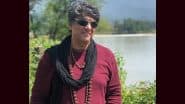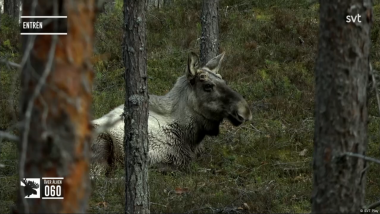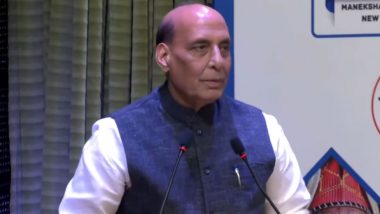A rushing river, a soaring bird, a rustle of leaves and슬롯사이트� that슬롯사이트�s it most of the time. Slow TV has become a growing sensation in recent years, but what슬롯사이트�s the fascination?Whether it’s to watch jellyfish drifting hypnotically, storks incubating high in the trees or elk embarking on their seasonal migration toward greener pastures, more and more people are tuning in to watch nature live streams. Also known as slow TV.
Also Read | Sports News | Bangladesh to Play Two T20Is Against UAE Before Pakistan Tour.
The term, which refers to unnarrated coverage of long events — typically shown in real time — dates back to 2009 when the Norwegian Broadcasting Corporation (NRK) aired aseven-hour train journey.
That long, uneventful rail trip captured enough of the public imagination to inspire unabridged coverage of boat trips, knitting nights and birds feeding. It also marked the birth of a movement that eventually spread to other countries.
Ten years later, the Swedish Television network (SVT) introduced a non-stop three-week livestream called the 'Great Elk Trek', which lives up to its name. Thirty-two cameras deployed in the forests of northern Sweden offer views of serene landscapes, and on rare occasions, an elk crossing a river.
From the outset, nearly one million people tuned in to witness the natural sounds and sights of Swedish wildlife. Then last year, the annual livestream drew over nine million viewers, including a growing number from abroad. It has also spawned an offshoot Facebook group whose 85,000 members engage in lively communication about what is happening on the livestream
Johan Erhag, project manager for The Great Elk Trek, believes the show's success lies in its contrast to the heady pace of news cycles, social media, and fast-cut TV. "There is calmness, but still excitement over a longer time," he said. "You have time to reflect and relax."
And that is not only true of the elk stream. The zoo in San Diego, California has set up wildlife cameras that allow the public to observe exotic animals such as polar bears, elephants, red pandas and tigers.
And in southern England, a stork nest home to a pair of birds called Ania and Bartek that have been together since 2020 has attracted over 55,000 online viewers from around the world this spring. The nest is much too high for ground-level observation, so enthusiasts have been tuning in via an overhead webcam to see the storks successfully lay eggs, hatch them and fledge four chicks.
"People are saying it is peaceful and relaxing to watch. It’s a window into the wild scene," said Laura Vaughan-Hirsch, manager of The White Stork Project. "They also learn how chicks develop."
A detox for the stressed
Slow TV doesn’t only reach viewers from different countries, but also appeals to a wide range of people, from casual watchers to experts, children to seniors. And they all log on for different reasons.
Ida Lindberg, a pre-school teacher in the western Swedish town of Sunne uses the Great Elk Trek as an educational tool, watching with her five and six-year-old pupils twice daily. She says exposure to these animals, that typically roam alone but form larger groups for the sake of the annual migration, sparks discussion on social interaction, nature and even math.
"It introduces them to the importance of the environment, and we hope it stays with them as they grow and take climate-smart decisions," she told DW.
The elk trek also carries symbolic significance, marking the transition from winter to summer, and for has become an annual viewing tradition for some. Charlotte Ottilia Campeborn has been following the livestream since it started and admits she’s become addicted.
She has it playing in the background while she works from home and finds it "soothing." Particularly at a time, she says, when people are looking for things that make them feel comfortable and safe.
"As the situation is in the world right now, you want to even it out with elements that give you faith in the future. And in this case, nature follows its wild course as it always has," Campeborn said.
A gateway to climate awareness
Across the board, slow TV about nature is praised for its positive effect on well-being. But Johan Erhag says its impact can go beyond relaxation , fostering a deeper connection with nature and inspiring climate-conscious behavior.
"I highly believe the Great Elk Trek has opened people’s eyes to animals and nature and that there is something important in preserving it," Erhag said.
Rebecca Mauldin, assistant professor at the University of Texas in the US city of Arlington, reinforces this idea. She and her colleagues have found evidence that the insights and emotional connection these nature-focused livestreams can generate promotes conservationist attitudes and environmental efforts.
"People are more likely to want to protect the places and animals they’ve come to know and love."
But the research field on nature-focused livestreams is just beginning and experts maintain that virtual experiences cannot completely replace real ones.
"Viewing livestreams is probably not as restorative as physically being in nature," Mauldin said. "However, it does have similar benefits and can be really valuable for people who are unable to have that physical engagement with nature."
Edited by: Tamsin Walker
(The above story first appeared on LatestLY on May 02, 2025 03:50 PM IST. For more news and updates on politics, world, sports, entertainment and lifestyle, log on to our website latestly.com).













 Quickly
Quickly


















